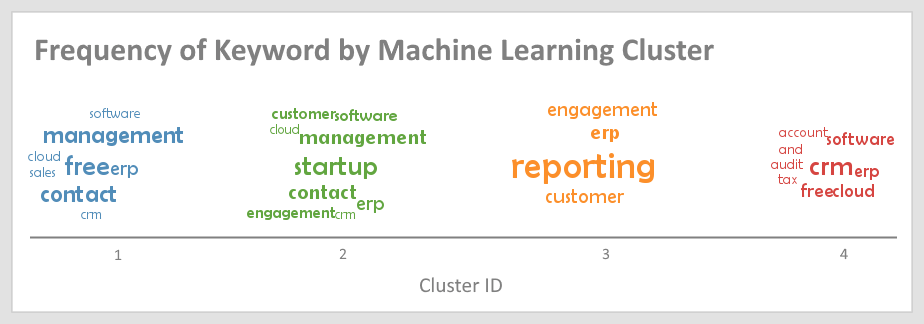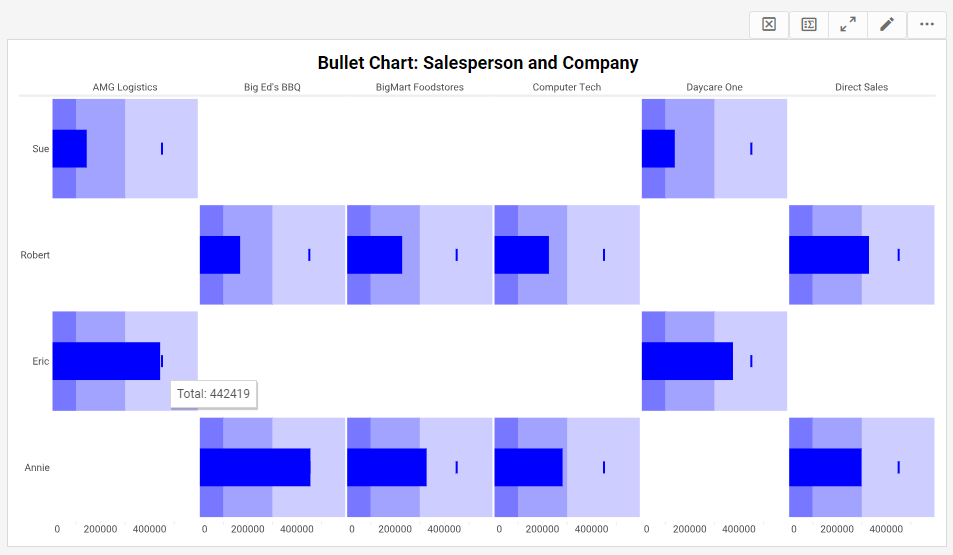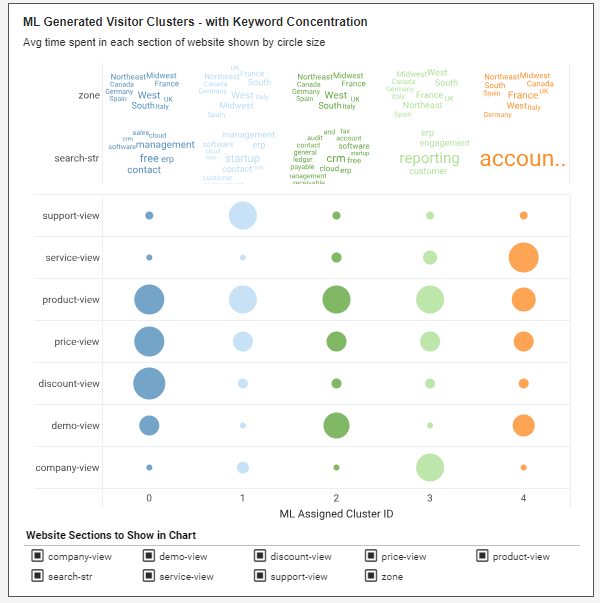Interested in Web-Based BI, but Concerned About Security?
Organizations that make BI more accessible to their employees have major advantages over those that do not. However, BI data often has varying levels of sensitivity; not all data is appropriate for all parties. For many companies deploying BI, this tension between security and availability can be a Catch-22. With StyleBI, this is a non-issue.


Fully Customizable Security Settings | Precise Control of Information
Apply security specifications to every level of the reporting process.
With InetSoft, you won't have to restrict the use of BI in order to protect your data. Our software enables exact security specifications to be applied to every step of the reporting process. On the level of data access, Virtual Private Models(VPM's) are attached to different user roles. VPM's can hide entire tables and columns, as well as filtering data returned by a user query.
Access to different reports and folders can also be specified based on user role. Reading and writing can be separated into different permissions, allowing some users to merely read a report, while allowing others to overwrite it as well. Even the reporting interface can be customized for individual user roles. Functions such as alerts, report scheduling, and ad hoc analysis can all be turned on or off for specific groups of users.
 |
View the gallery of examples of dashboards and visualizations. |
Utilize Your Existing Security Schema | For Single-Sign-On Capability
Seamlessly integrate InetSoft's solution into your existing application.
Do you already have a security schema with your current application, and would like to use the same security settings for InetSoft's solution? StyleBI makes it easy, integrating with existing LDAP security models to enable single-sign-on capability. If you enter the server settings, our software will automatically import the users and roles, and use them to set permissions for the reporting process.
Empower Your Employees | Make BI Pervasive
Maximize the contribution of every employee by giving users across your organization the power to discover new insights in your company's data.
When you're confident that your data and reports have the appropriate levels of security, it gives you the freedom to make BI pervasive across your organization. When BI is provided to many users, a transformation occurs. Instead of having just a few BI specialists analyzing your data, you have many employees of different backgrounds and levels of understanding bringing their own unique perspective to the data, yielding new insights and even new directions for your organization.
Since Inetsoft's solution is easy to use and does not require a technical background, it is the ideal choice for this kind of widespread BI. With a single solution, you can bring your organization into the 21st century.
About InetSoft
Since 1996 InetSoft has been delivering easy, agile, and robust business intelligence software that makes it possible for organizations and solution providers of all sizes to deploy or embed full-featured business intelligence solutions. Application highlights include visually-compelling and interactive dashboards that ensure greater end-user adoption plus pixel-perfect report generation, scheduling, and bursting.
InetSoft's patent pending Data Block technology enables productive reuse of queries and a unique capability for end-user defined data mashup. This capability combined with efficient information access enabled by InetSoft's visual analysis technologies allows maximum self-service that benefits the average business user, the IT administrator, and the developer. InetSoft solutions have been deployed at over 5,000 organizations worldwide, including 25% of Fortune 500 companies, spanning all types of industries.
 |
Read the top 10 reasons for selecting InetSoft as your BI partner. |
What KPIs and Metrics Are Tracked in Dashboards by Fish Hatcheries?
Fish hatcheries utilize key performance indicators (KPIs) and metrics in their dashboards to monitor and manage various aspects of their operations effectively. Fish hatcheries play a crucial role in aquaculture by producing fish and other aquatic species for conservation, commercial purposes, and recreational fisheries. Here's an in-depth exploration of the KPIs and metrics tracked in fish hatchery dashboards, along with their definitions and significance in performance management.
Key Performance Indicators (KPIs) Tracked in Fish Hatcheries
1. Survival Rate
Definition: The percentage of fish that survive from egg fertilization to a specific life stage (e.g., fry, fingerling).
Significance: Survival rate is a critical KPI that reflects the effectiveness of hatchery practices, including water quality management, feeding protocols, disease control, and overall husbandry. High survival rates indicate successful rearing conditions and contribute to meeting production goals.
2. Growth Rate
Definition: The average increase in size or weight of fish over a specified period.
Significance: Growth rate is essential for assessing the health and nutritional status of fish. It influences the time required to reach market size or release into natural habitats. Monitoring growth rate helps hatcheries adjust feeding regimes, water temperature, and other environmental factors to optimize growth performance.
3. Feed Conversion Ratio (FCR)
Definition: The amount of feed consumed by fish relative to their weight gain.
Significance: FCR indicates the efficiency of feed utilization in fish production. Lower FCR values indicate efficient feed conversion, minimizing costs and environmental impact. Monitoring FCR helps hatcheries adjust feed formulations and feeding practices to optimize economic and ecological sustainability.
4. Water Quality Parameters
Definition: Various parameters such as dissolved oxygen levels, pH, ammonia levels, and temperature in hatchery water systems.
Significance: Water quality directly affects fish health and growth. Monitoring these parameters ensures optimal conditions for fish survival and development. Deviations from ideal levels can indicate potential health risks or environmental stressors, prompting corrective actions to maintain water quality standards.
5. Disease Incidence and Mortality Rates
Definition: The occurrence of diseases and the percentage of fish lost due to diseases.
Significance: Disease outbreaks can devastate fish populations in hatcheries. Tracking disease incidence and mortality rates helps hatcheries implement preventive measures, such as vaccination, biosecurity protocols, and quarantine procedures. Effective disease management minimizes losses and maintains production continuity.
6. Egg Hatchability Rate
Definition: The percentage of viable eggs that successfully hatch into larvae or fry.
Significance: Egg hatchability rate is crucial for assessing the quality of broodstock and reproductive health. Monitoring hatchability ensures genetic diversity and sustainable production. Low hatchability rates may indicate issues with broodstock management, egg handling, or environmental conditions during spawning.
7. Production Costs per Unit
Definition: Total operational costs divided by the number of fish produced.
Significance: Production costs per unit measure the efficiency and profitability of hatchery operations. Monitoring these costs helps hatcheries optimize resource allocation, labor management, and procurement strategies. Lower production costs per unit indicate improved operational efficiency and financial sustainability.
8. Inventory Turnover Ratio
Definition: The rate at which fish inventory is replenished or sold relative to the total inventory.
Significance: Inventory turnover ratio assesses the efficiency of fish production and sales. Higher turnover ratios indicate faster production cycles and effective market demand fulfillment. Monitoring inventory turnover helps hatcheries adjust stocking densities, production schedules, and marketing strategies to meet customer demand and minimize inventory holding costs.
9. Customer Satisfaction Index
Definition: Feedback and satisfaction scores from stakeholders, including commercial buyers, conservation organizations, and recreational anglers.
Significance: Customer satisfaction index reflects stakeholder perceptions of hatchery products and services. Positive feedback and high satisfaction scores indicate effective communication, product quality, and service delivery. Monitoring customer satisfaction helps hatcheries build strong relationships, enhance market reputation, and identify areas for improvement.
10. Regulatory Compliance
Definition: Adherence to local, state, and federal regulations governing aquaculture practices, environmental conservation, and fish health.
Significance: Regulatory compliance ensures hatchery operations meet legal requirements and environmental standards. Non-compliance can result in fines, sanctions, or operational restrictions. Monitoring regulatory compliance helps hatcheries implement best practices, maintain environmental stewardship, and ensure sustainable fish production.
Importance of KPIs in Performance Management
1. Performance Evaluation and Benchmarking
KPIs provide measurable benchmarks for evaluating hatchery performance against operational goals and industry standards. By tracking KPI trends over time, hatcheries can assess progress, identify performance gaps, and implement corrective actions to improve efficiency and productivity.
2. Decision-Making and Strategic Planning
KPIs inform data-driven decision-making and strategic planning in hatchery management. Insights from KPI dashboards guide resource allocation, investment priorities, and operational adjustments to optimize production outcomes, mitigate risks, and capitalize on growth opportunities.
3. Continuous Improvement and Innovation
Monitoring KPIs fosters a culture of continuous improvement and innovation within hatchery operations. By identifying trends, patterns, and areas for enhancement, hatcheries can innovate practices, adopt new technologies, and refine protocols to enhance productivity, sustainability, and competitiveness in the aquaculture industry.
4. Resource Optimization and Cost Management
KPIs enable hatcheries to optimize resource utilization, manage costs effectively, and maximize profitability. By analyzing production efficiencies, resource consumption patterns, and cost-performance ratios, hatcheries can streamline operations, reduce waste, and achieve sustainable economic outcomes.
5. Stakeholder Engagement and Accountability
Effective KPI monitoring promotes transparency, accountability, and stakeholder engagement in hatchery operations. Regular reporting of KPI metrics to internal teams, regulatory authorities, and external stakeholders builds trust, fosters collaboration, and strengthens relationships based on shared goals of environmental stewardship and sustainable aquaculture practices.
 |
Read how InetSoft saves money and resources with deployment flexibility. |
More Articles About BI Security
Malware Analysis and Classification - One of the most important components of endpoint security is the analysis and categorization of malware. Software dashboards provide key performance indicators (KPIs) for the detection, classification, and further examination of malware. By helping businesses understand the kind of dangers they encounter, these metrics enable them to take preventative action against similar assaults in the future...
Permission Change Monitoring - Enterprise operations generate and rely on vast quantities of data. Much of that data is sensitive, and unauthorized access could have dire consequences. For example, client databases can contain identifiable information such as names, (email) addresses, and banking info for thousands or even millions of people. With so much on the line, data breach costs can soar...
Threat Intelligence Accuracy - The accuracy of their threat intelligence is one of the major KPIs for security intelligence analysts. This entails calculating the proportion of notifications that are reliable and suitable for action. High levels of precision show that the team is successfully identifying and addressing serious dangers. On the other side, low accuracy levels can mean that the team is spending time and money looking for false positives...
Time To Detect And Respond To Security Incidents - This KPI measures the time it takes for an organization to detect and respond to security incidents. A shorter response time can indicate that an organization has effective security measures in place and is able to respond quickly to threats...


